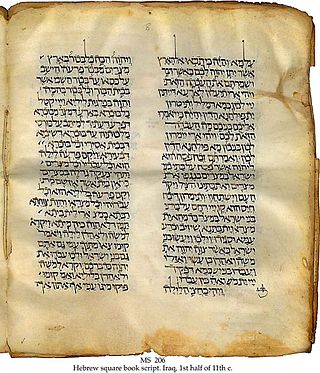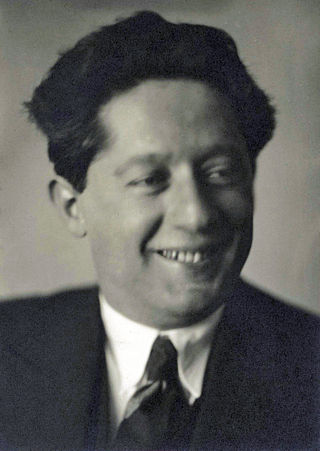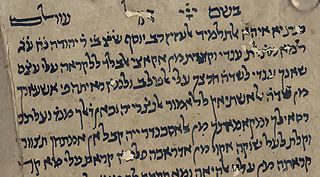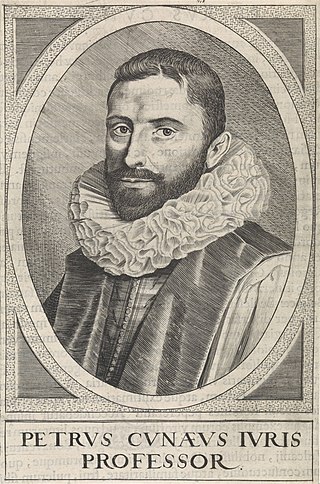Halakha, also transliterated as halacha, halakhah, and halocho, is the collective body of Jewish religious laws that are derived from the Written and Oral Torah. Halakha is based on biblical commandments (mitzvot), subsequent Talmudic and rabbinic laws, and the customs and traditions which were compiled in the many books such as the Shulchan Aruch. Halakha is often translated as "Jewish law", although a more literal translation of it might be "the way to behave" or "the way of walking". The word is derived from the root which means "to behave". Halakha not only guides religious practices and beliefs, it also guides numerous aspects of day-to-day life.

Moses ben Maimon (1138–1204), commonly known as Maimonides and also referred to by the Hebrew acronym Rambam, was a Sephardic rabbi and philosopher who became one of the most prolific and influential Torah scholars of the Middle Ages. In his time, he was also a preeminent astronomer and physician, serving as the personal physician of Saladin. He was born and lived in Córdoba in al-Andalus within the Almoravid Empire on Passover eve 1138 or 1135, until his family was expelled for refusing to convert to Islam. Later, he lived in Morocco and Egypt and worked as a rabbi, physician and philosopher.

The Torah is the compilation of the first five books of the Hebrew Bible, namely the books of Genesis, Exodus, Leviticus, Numbers and Deuteronomy. The Torah is known as the Pentateuch or the Five Books of Moses by Christians. It is also known as the Written Torah in Rabbinical Jewish tradition. If meant for liturgic purposes, it takes the form of a Torah scroll. If in bound book form, it is called Chumash, and is usually printed with the rabbinic commentaries.

The Talmud is the central text of Rabbinic Judaism and the primary source of Jewish religious law (halakha) and Jewish theology. Until the advent of modernity, in nearly all Jewish communities, the Talmud was the centerpiece of Jewish cultural life and was foundational to "all Jewish thought and aspirations", serving also as "the guide for the daily life" of Jews.

A targum was an originally spoken translation of the Hebrew Bible that a professional translator would give in the common language of the listeners when that was not Biblical Hebrew. This had become necessary near the end of the first century BC, as the common language was Aramaic and Hebrew was used for little more than schooling and worship. The translator frequently expanded his translation with paraphrases, explanations and examples, so it became a kind of sermon.

Saul Lieberman, also known as Rabbi Shaul Lieberman or, among some of his students, the Gra"sh, was a rabbi and a Talmudic scholar. He served as Professor of Talmud at the Jewish Theological Seminary of America (JTSA) for over 40 years, and for many years was dean of the Harry Fischel Institute in Israel and also president of the American Academy for Jewish Research.

Baraita designates a tradition in the Oral Torah of Rabbinical Judaism that is not incorporated in the Mishnah. Baraita thus refers to teachings "outside" of the six orders of the Mishnah. Originally, "Baraita" probably referred to teachings from schools outside the main Mishnaic-era yeshivas – although in later collections, individual barayata are often authored by sages of the Mishna (Tannaim).

The Elephantine Papyri and Ostraca consist of thousands of documents from the Egyptian border fortresses of Elephantine and Aswan, which yielded hundreds of papyri and ostraca in hieratic and demotic Egyptian, Aramaic, Koine Greek, Latin and Coptic, spanning a period of 100 years in the 5th to 4th centuries BCE. The documents include letters and legal contracts from family and other archives, and are thus an invaluable source of knowledge for scholars of varied disciplines such as epistolography, law, society, religion, language and onomastics. The Elephantine documents include letters and legal contracts from family and other archives: divorce documents, the manumission of slaves, and other business. The dry soil of Upper Egypt preserved the documents.

The Mishneh Torah, also known as Sefer Yad ha-Hazaka, is a code of Rabbinic Jewish religious law (halakha) authored by Maimonides. The Mishneh Torah was compiled between 1170 and 1180 CE, while Maimonides was living in Egypt, and is regarded as Maimonides' magnum opus. Accordingly, later sources simply refer to the work as "Maimon", "Maimonides", or "RaMBaM", although Maimonides composed other works.

Targum Onkelos is the primary Jewish Aramaic targum ("translation") of the Torah, accepted as an authoritative translated text of the Five Books of Moses and thought to have been written in the early second century CE.

Medieval Hebrew was a literary and liturgical language that existed between the 4th and 19th century. It was not commonly used as a spoken language, but mainly in written form by rabbis, scholars and poets. Medieval Hebrew had many features distinguishing it from older forms of Hebrew. These affected grammar, syntax, sentence structure, and also included a wide variety of new lexical items, which were either based on older forms or borrowed from other languages, especially Aramaic, Koine Greek and Latin.
Nethanel ben Isaiah was a Yemenite Jewish rabbi, Biblical commentator and poet of the fourteenth century. He is best known as the author of a homiletic commentary on the Torah entitled Nur al-Zulm wa-Mashbah al-Hikm, translated into Hebrew as Sefer Me'or ha-Afelah.
Vidal of Tolosa, alternate spelling Vidal de Toulouse, was a Spanish rabbi and scholar of the late 14th century, and is often referred to by the sobriquet, Harav Ha-Maggid, or the Maggid Mishneh, named for his magnum opus by that name.
Jewish commentaries on the Bible are biblical commentaries of the Hebrew Bible from a Jewish perspective. Translations into Aramaic and English, and some universally accepted Jewish commentaries with notes on their method of approach and also some modern translations into English with notes are listed.

Midrash HaGadol or The Great Midrash is a work of aggaddic midrash, expanding on the narratives of the Torah, which was written by David ben Amram Adani of Yemen.

Ktav Ashuri also (Ktav) Ashurit, is the traditional Hebrew language name of the Hebrew alphabet, used to write both Hebrew and Jewish Babylonian Aramaic. It is often referred to as (the) Square script. The names "Ashuri" (Assyrian) or "square script" are used to distinguish it from the Paleo-Hebrew script.

Petrus Cunaeus was the pen name of the Dutch Christian scholar Peter van der Kun. His book The Hebrew Republic is considered "the most powerful statement of republican theory in the early years of the Dutch Republic."
Yochanan Muffs was an American professor of the Bible and religion at the Jewish Theological Seminary in New York City.
Dina d'malkhuta dina is a principle in Jewish religious law that the civil law of the country is binding upon the Jewish inhabitants of that country, and, in certain cases, is to be preferred to Jewish law. The concept of dina de-malkhuta dina is similar to the concept of conflict of laws in other legal systems. It appears in at least twenty-five places in the Shulchan Arukh.
Textbook of Aramaic Documents from Ancient Egypt, often referred to as TAD or TADAE, is a four volume corpus of Aramaic inscriptions written during the period of ancient Egypt, written by Bezalel Porten and Ada Yardeni.










